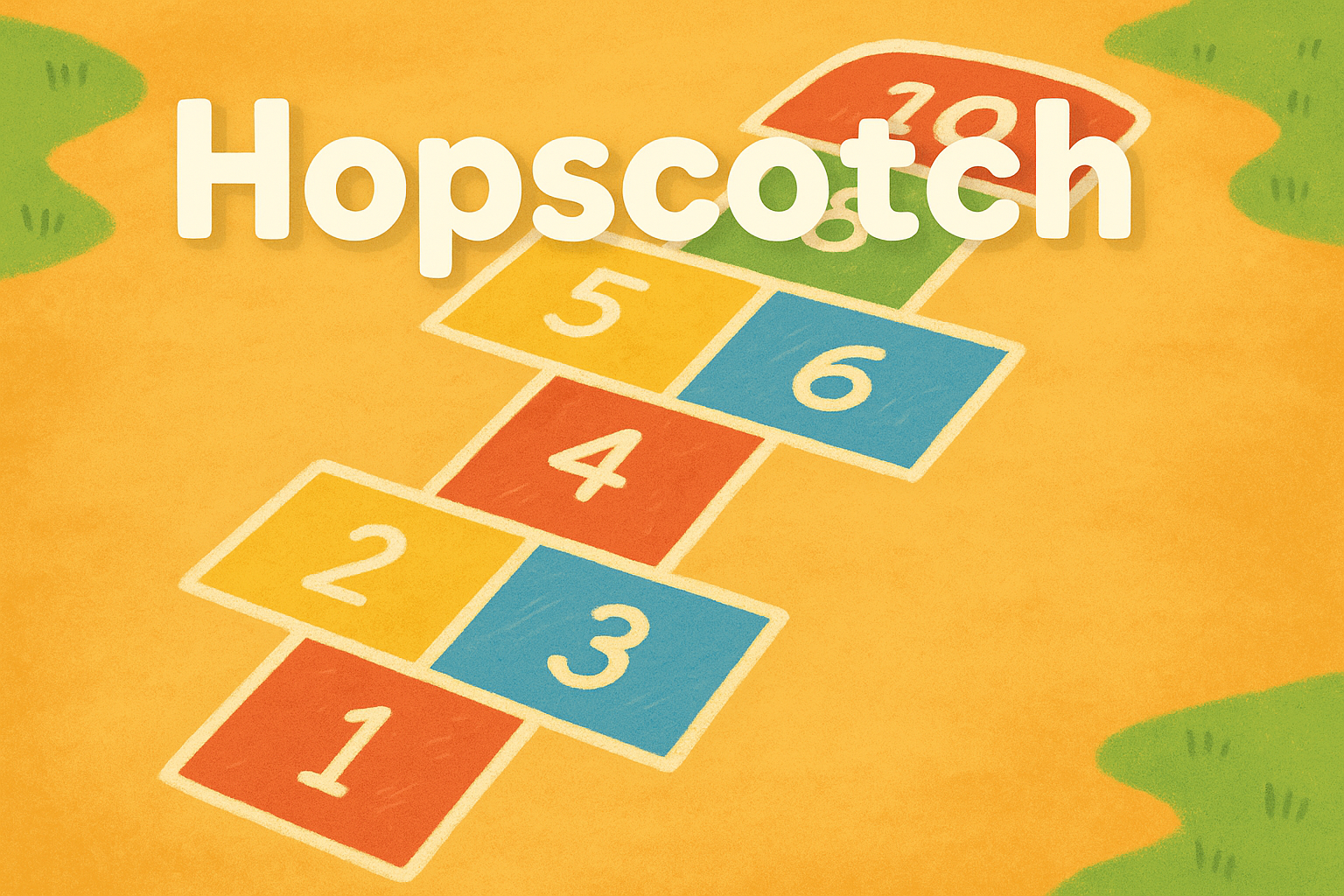Hopscotch is a brilliant mix of movement, number learning, and old-school fun. Drawn out with chalk or marked with tape, it’s easy to set up and just as fun for one child as it is for a group. It’s a great way to support coordination, balance, and counting skills, all while burning off a bit of energy.
Whether you’re playing on the pavement outside your home, in the park, or even indoors with masking tape, hopscotch is endlessly adaptable and perfect for spontaneous outdoor play.
Materials Needed
- Chalk (for outdoor play) or masking tape (for indoor)
- Small item to toss—stone, beanbag, button, or bottle top
Tools Needed
- None
Steps
- Draw the Hopscotch Grid
Use chalk to draw numbered squares (typically 1–9 or 10) in a simple pattern on the ground. - Find a Marker
Each player needs a small object to throw onto the grid. It should be light and safe but easy to see. - Take Turns
Throw the marker onto square 1. Then hop through the rest of the grid, skipping the square with the marker. - Hop Carefully
Hop on one foot for single squares and land with one foot in each box for doubles. Turn around at the end and return the same way. - Repeat and Progress
Next time, throw the marker onto square 2, and so on. If you miss or step outside the lines, it’s the next person’s turn.
Variations
- Shape or Colour Hop: Replace numbers with colours or shapes for a different learning focus.
- Timed Hop: Use a stopwatch and see who can complete the grid fastest without errors.
- Obstacle Hopscotch: Add small challenges like clapping, spinning, or hopping backwards between squares.
- Indoor Friendly: Use masking tape on carpet or tiles and play with soft slippers or socks.


Leave a Reply